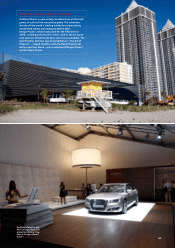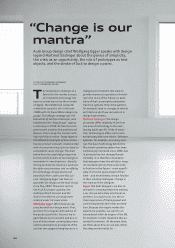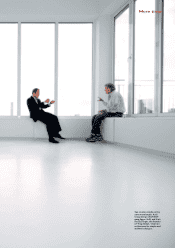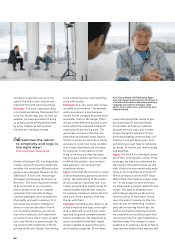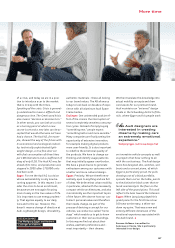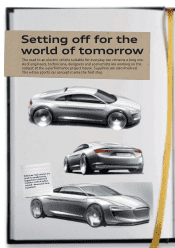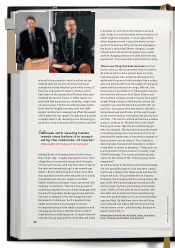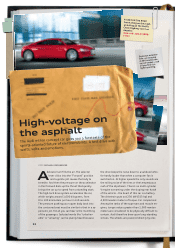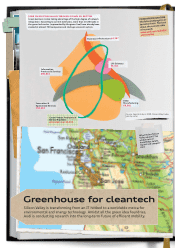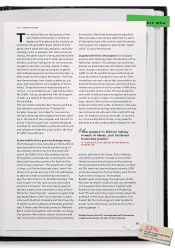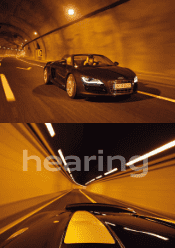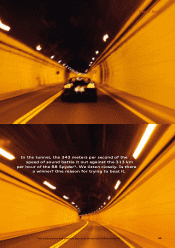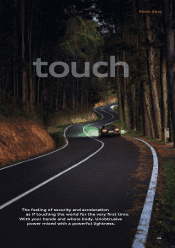Audi 2009 Annual Report Download - page 96
Download and view the complete annual report
Please find page 96 of the 2009 Audi annual report below. You can navigate through the pages in the report by either clicking on the pages listed below, or by using the keyword search tool below to find specific information within the annual report.
More time
tric motors. The short distances that the torque
has to travel between its generation and meeting
the asphalt reduce friction losses. Hardly a new-
ton meter is left behind. As much as the accelera-
tion promotes the rush of adrenaline, the innova-
tive drive system does just as much to bring the
pulse back down. Depending on the driving situa-
tion, the assembly supports, brakes or corrects.
The intelligent electronics direct power to the
wheels to always ensure the best possible dynam-
ics and safety. This also provides maximum enjoy-
ment for the driver when they discover how deliv-
ering more torque to the outside wheels while
accelerating out of a corner pulls the car around
the corners as if it were on rails. The e-tron is
glued to the road and pulls through corners as if
the gods of driving physics had braced their hands
against the flanks of the tires in support. The
electronics already begin monitoring traction
while accelerating from rest because “there isn’t a
mass-produced tire available today that could
withstand it if the motors delivered their maxi-
mum torque unfettered,” explains an Audi engi-
neer. The controller therefore monitors the steer-
ing angle of the wheels – to prevent damage to
the suspension mountings, for example – and
measures wheel slip, from which it derives the
grip on the road surface.
The suspension plays along charmingly. Taut, but
not uncomfortable. Very few prototypes exhibit
such balance – and even more can be expected of
the production vehicle. The brakes bite hard and
powerfully, yet their calipers are applied with
great precision to the four lightweight composite
disks. The disks shimmer with a delicate gray
through the spokes of the high-performance
wheels developed specifically for the e-tron. They
are however only used for severe braking. As soon
as the driver backs off the thrust, the polarity of
the electric motors is reversed and they act as
generators. The recuperated energy is fed back
into the batteries as electric current. This is good
for a few more kilometers of range.
The Audi e-tron electric supercar is based on the
lightweight aluminum body of the R8, which is
ideally suited as the platform for the innovative
electric technology. Lightweight construction and
sophisticated aerodynamics are important prop-
erties that reduce energy consumption and thus
increase range. The e-tron has to lug around a
heavy load, which is located directly behind the
tailored seats covered in soft, exquisite leather.
The lithium ion battery weighs in at 470 kilo-
grams (a powerful V8 engine weighs barely half
that), has an electrical capacity of 42.2 kilowatt
hours at a voltage of 400 volts and is good for a
range of 248 kilometers. The placement of the
battery is excellent in terms of driving dynamics
and is also safe in the event of a crash, as already
computed by the developers in countless com-
puter simulations.
But the charged battery has another entirely dif-
ferent set of requirements and exhibits almost
human traits. Its capacity decreases if it gets too
hot or too cold. 25 degrees Celsius is optimal.
The battery therefore has its own water-filled
cooling loop. Three additional loops provide ther-
mal management for the motors and the power
electronics. A series of flaps in the single-frame
grille and in the flanks, as well as extensible cool-
ing ribs above the rear of the 4.26-meter-long
and only 1.23-meter-tall electromobile direct
cooling air from the slipstream to the motors.
Side mirrors are death to aerodynamics, which is
why the designers have done away with them on
the e-tron. Instead, tiny cameras snuggle tightly
against the outside of the A-pillars and project
their images into the cabin. The small four-inch
displays sit at the exact point to which the driver’s
eyes move while changing lanes: to the front win-
dow frame of the driver’s and the passenger’s
door. The break with our viewing habits shouldn’t
be too sharp.
A heat pump system regulates the cabin tempera-
ture to relieve some of the burden on the energy
system. Lightweight, quiet and very responsive,
the heat pump helps e-tron drivers to keep a cool
head, while an LED charge status indicator
mounted on the center console (which no longer
houses a cardan shaft but gives the body greater
torsional rigidity) keeps them informed at all
times. The charge status of the battery is repre-
sented by either a flashing red light or a steady
green light.
Although the e-tron units in existence already
have a decidedly sporty character, the developers
still have a long way to go. The car is scheduled to
go into series production in 2012.
Automotive journalist Michael Kirchberger enjoyed
the test drive in the Audi e-tron along the Pacific coast
of California.
93
Photos: AUDI AG, istock photo


